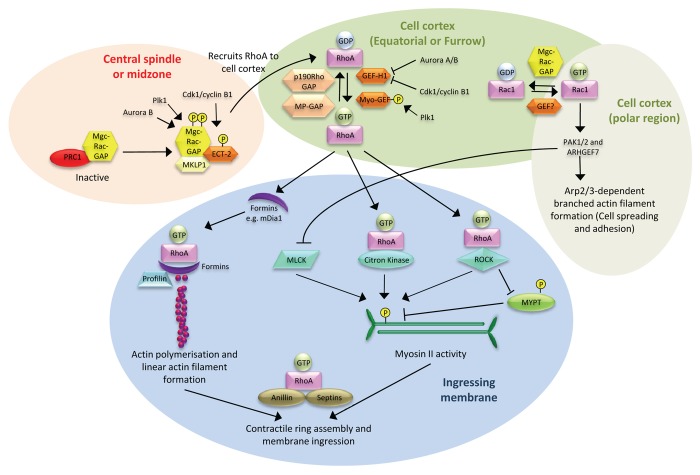Figure 3. Spatial regulation of the signaling pathways mediated by Rho GTPases during the ingression phase of cytokinesis. Upon anaphase onset, the site of the division plane is established. This involves in-part the interaction between the centralspindlin complex and Ect-2, which is facilitated by phosphorylation, and occurs at the central spindle and/or midzone. RhoA is subsequently recruited to the equator of the cell cortex where its activation is tightly regulated. Its activity is confined to a narrow zone (defining the division plane) by several Rho GEFs (GEF-H1, Myo-GEF) and GAPs (p190RhoGAP, MP-GAP). At the same time, cell cortex localized Rac1 is maintained in an inactive state by MgcRacGAP to inhibit the formation of Arp2/3-mediated branched actin filaments. However, this pathway may be active at the polar regions to allow for cell elongation. At the equatorial cell cortex, RhoA activates the effectors, mDia1 for linear actin filament polymerization, as well as the kinases, MLCK, ROCK, and citron kinase, to activate myosin II. The outcome is assembly and activation of the actin-myosin II contractile ring to mediate membrane ingression. Anillin and septin proteins maintain all furrow components within this narrow zone for efficient and complete membrane ingression.

An official website of the United States government
Here's how you know
Official websites use .gov
A
.gov website belongs to an official
government organization in the United States.
Secure .gov websites use HTTPS
A lock (
) or https:// means you've safely
connected to the .gov website. Share sensitive
information only on official, secure websites.
